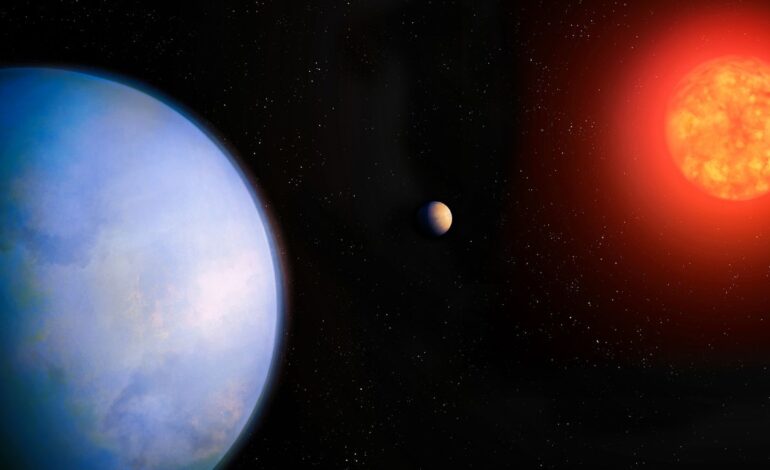New Super-Earth Discovered Near Earth Offers Hope for Life

A newly identified exoplanet, designated GJ 251c, lies less than 20 light-years from Earth and is generating considerable excitement among astronomers and astrobiologists. This super-Earth, which is approximately four times the mass of our planet, orbits a red dwarf star in the habitable zone, suggesting it may be a prime candidate in the search for extraterrestrial life.
The discovery, reported on October 23, 2023, highlights the ongoing efforts to identify planets that could support life outside our solar system. Located in the constellation of Gemini, GJ 251c is part of a system that includes another planet, GJ 251b, which was discovered in 2020. GJ 251c’s distance from its host star places it within what is often referred to as the Goldilocks zone, where conditions are just right for liquid water to exist.
Identifying GJ 251c involved over two decades of meticulous observations. Researchers tracked subtle wobbles in the parent star caused by the gravitational pull of the orbiting planet. This wobble results in a Doppler shift in the star’s radial velocity, a phenomenon measurable with advanced spectrographic techniques. The team, including Suvrath Mahadevan, a professor of astronomy at Penn State University, utilized archived data as well as new high-precision observations from the Habitable-Zone Planet Finder (HPF) on the Hobby-Eberly Telescope in Texas to confirm the existence of GJ 251c.
The research team faced significant challenges in distinguishing GJ 251c’s signals from the background noise associated with stellar activity. Mahadevan emphasized the complexity of isolating the planetary signals from the star’s turbulent surface, which can obscure the faint signals created by orbiting planets.
Future observations of GJ 251c are now being planned, although its distance may limit the capabilities of current telescopes. The James Webb Space Telescope (JWST) may not be able to directly assess its atmosphere. Instead, astronomers are looking toward the next generation of telescopes, including the anticipated Habitable Worlds Observatory, projected for launch in the 2040s, which may be necessary to fully characterize the planet.
While GJ 251c stands out as a leading candidate for the search for biosignatures, concerns linger regarding its host star. Red dwarfs, like the one GJ 251c orbits, are known for their variable activity, which can result in powerful flares that might strip planets of their atmospheres. Some astronomers express skepticism about the potential for Earth-like planets to thrive around such stars.
Nevertheless, GJ 251c benefits from its relatively greater distance from its star compared to other known habitable zone planets orbiting red dwarfs. This distance could help it avoid the more intense effects of stellar flares. Should GJ 251c possess a robust atmosphere and a strong magnetic field, it might be better equipped to withstand the harsh conditions imposed by its host star.
Despite the promising findings, Mahadevan cautioned that much remains unknown. “We made an exciting discovery,” he stated, “but there’s still much more to learn about this planet.” The ongoing exploration of GJ 251c not only enhances our understanding of planetary systems but also fuels the quest for life beyond our own world.






